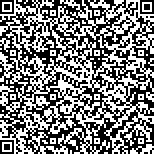下载中心
优秀审稿专家
优秀论文
相关链接
摘要

利用卫星遥感探测区域和全球尺度太阳诱导叶绿素荧光SIF(Solar-Induced chlorophyll Fluorescence)近年来成为研究热点。由于地球大气吸收和散射的影响,卫星尺度的SIF反演问题较为复杂,科学界对该问题一直存在争议,不同科学团队提出了众多方法。本文介绍了大气层顶SIF反演的机理、难点及思路,总结了近10年来最新发展的大气层顶SIF反演算法,并将这些算法归纳为3类:基于辐射传输方程的算法、简化的物理模型算法和数据驱动算法,分析讨论了各算法的特点及适用性;以应用最广泛的数据驱动算法为例,基于GOME-2数据详细介绍了算法的中间环节及注意事项;最后回顾了卫星遥感反演SIF的发展历程,汇总了目前及未来具有荧光探测能力的星载传感器,并依据数据源的特点相应地给出了适用的SIF反演算法,为今后基于航空和卫星高光谱数据的SIF反演提供了依据。
Solar-Induced chlorophyll Fluorescence (SIF) is directly related to photosynthesis and therefore considered a promising tool for grossprimary productivityestimation and vegetation environmental stress monitoring. Interest in SIF has increased since satellite remote sensing of SIF became feasible, especially after the first global SIF map was depicted in 2011. However, methods for retrieving SIF at Top-Of-Atmosphere (TOA) are still under investigation and argumentation, as decoupling SIF from total at-sensor radiance is challenging in the presence of atmospheric scattering and absorption. This paper aims to review the methods proposed for SIF retrieval at TOA over the past 10 years, to illustratethe advantages/disadvantages of those methods and to provide a technical instruction for remote sensingof SIF at airborne/space level.All the methods were categorized into three types: methods based on Radiative Transfer (RT) calculations, simplified physically-based methods and data-driven approaches. Methods based on RT calculations, including improved Fraunhofer Line Discrimination (FLD) methods and Spectral Fitting Methods (SFM), aim to retrieve SIF using atmospheric absorption lines. Atmosphere is characterized through RT calculations and then the TOA problem is converted to Bottom-Of-Atmosphere (BOA). These methods are applicable in situations with medium to low spectral resolution (0.3-5 nm) whereas imperfect characterization of atmosphere and RT process will lead to retrieval errors. Physically-based methods utilize single or several solar Fraunhofer Lines located in atmospheric windows, using solar irradiance spectra (measured or simulated through spectra convolution) as reference, decoupling SIF signal from earth radiances. Atmosphere scattering and absorption are neglected under these situations. Physically-based methods were developed for high spectral resolution measurements (e.g. 0.025 nm for GOSAT) and are sensitive to noise. Data driven approaches consider any fluorescent radiance spectrum consists non-fluorescent portion and SIF signal. Features extracted from large training dataset consisting non-fluorescent spectra (cloud, ice/snow, desert…) are used to express the non-fluorescent portion in the fluorescent spectra while SIF signal is expressed as mathematical function or spectra with fixed shape. Data driven approaches are popular because they do not require RT calculations while are applicable for medium to high spectral resolution situations. The performance of data driven approaches depends on the representativeness of training dataset and other empirical settings of the model, including the number of features used, function used to describe SIF spectrum and retrieval window selected.With several satellite sensors with medium spectral resolution (0.3-0.5 nm) being available for SIF retrieval (including currently available ones and scheduled to be launched in near future ones), including MetOp-GOME-2, Sentinel-5-TROPOMI and the FLuorescence EXplorer (FLEX) mission, RT-based methods and data-driven approaches are considered most promising SIF retrieval methods in the future. The RT-based methods are mainly developed by the FLEX team and are applicable for low spectral resolution and airborne data, but the performance of these methods on global SIF retrieval needs to be validated with real satellite data. On the other hand, several global SIF products have been generated using data driven approaches. However, representative training dataset needs to be built carefully and optimal parameters need to be determined according to different sensors.

